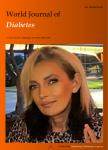Potential contributions of the methodology to the variability of glycaemic index of foods
作者机构:Bioactive DivisionThe Product MakersKeysborough 3173VictoriaAustralia School of Life SciencesLa Trobe UniversityBundoora 3086Australia
出 版 物:《World Journal of Diabetes》 (世界糖尿病杂志(英文版)(电子版))
年 卷 期:2021年第12卷第2期
页 面:108-123页
核心收录:
学科分类:1002[医学-临床医学] 100201[医学-内科学(含:心血管病、血液病、呼吸系病、消化系病、内分泌与代谢病、肾病、风湿病、传染病)] 10[医学]
主 题:Glycaemic index Blood glucose Nutritional guidelines Food classifications ISO 26642:2010
摘 要:Glycaemic index(GI)testing provides a useful point of comparison between carbohydrate *** this comparison to be meaningful,the methods used to determine GI values need to be rigorous and consistent between testing *** requirement has led to increasing standardization of the GI methodology,with an international standard developed in joint consultation with FAO/WHO(ISO 26642:2010)currently the most up to date *** purpose of this review is to compare the international standard to methods of published studies claiming to have performed a GI *** analysis revealed that the international standard permits a wide range of choices for researchers when designing a GI testing plan,rather than a single standardized *** has also been revealed that the literature contains significant variation,both between studies and from the international standard for critical aspects of GI testing *** primary areas of variation include;what glucose specification is used,which reference food is used,how much reference food is given,what drink is given during testing,the blood sampling site chosen and what assay and equipment is used to measure blood glucose *** each of these aspects we have explored some of the methodological and physiological implications of these *** insights suggest that whilst the international standard has assisted with framing the general parameters of GI testing,further standardization to testing procedures is still required to ensure the continued relevance of the GI to clinical nutrition.



